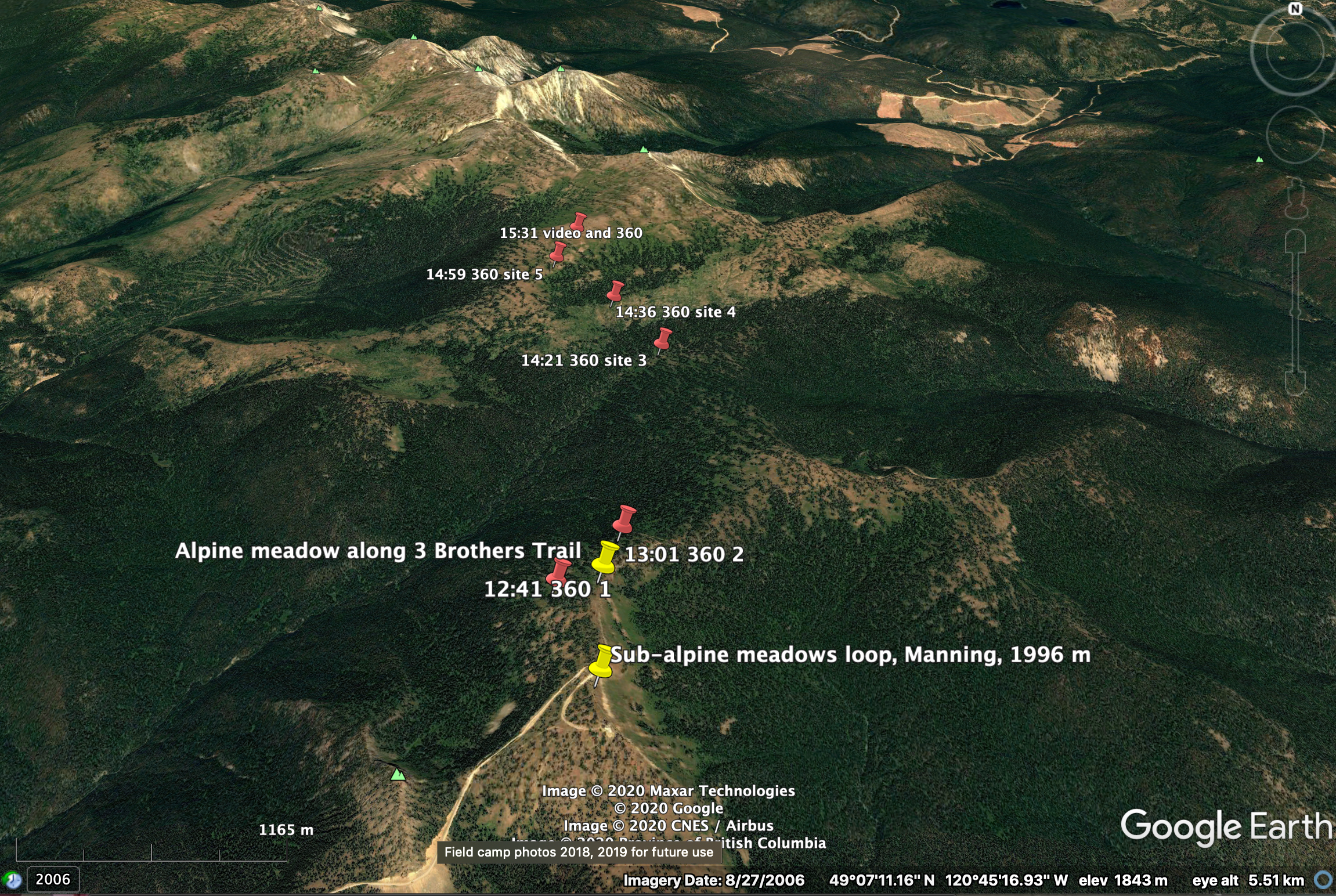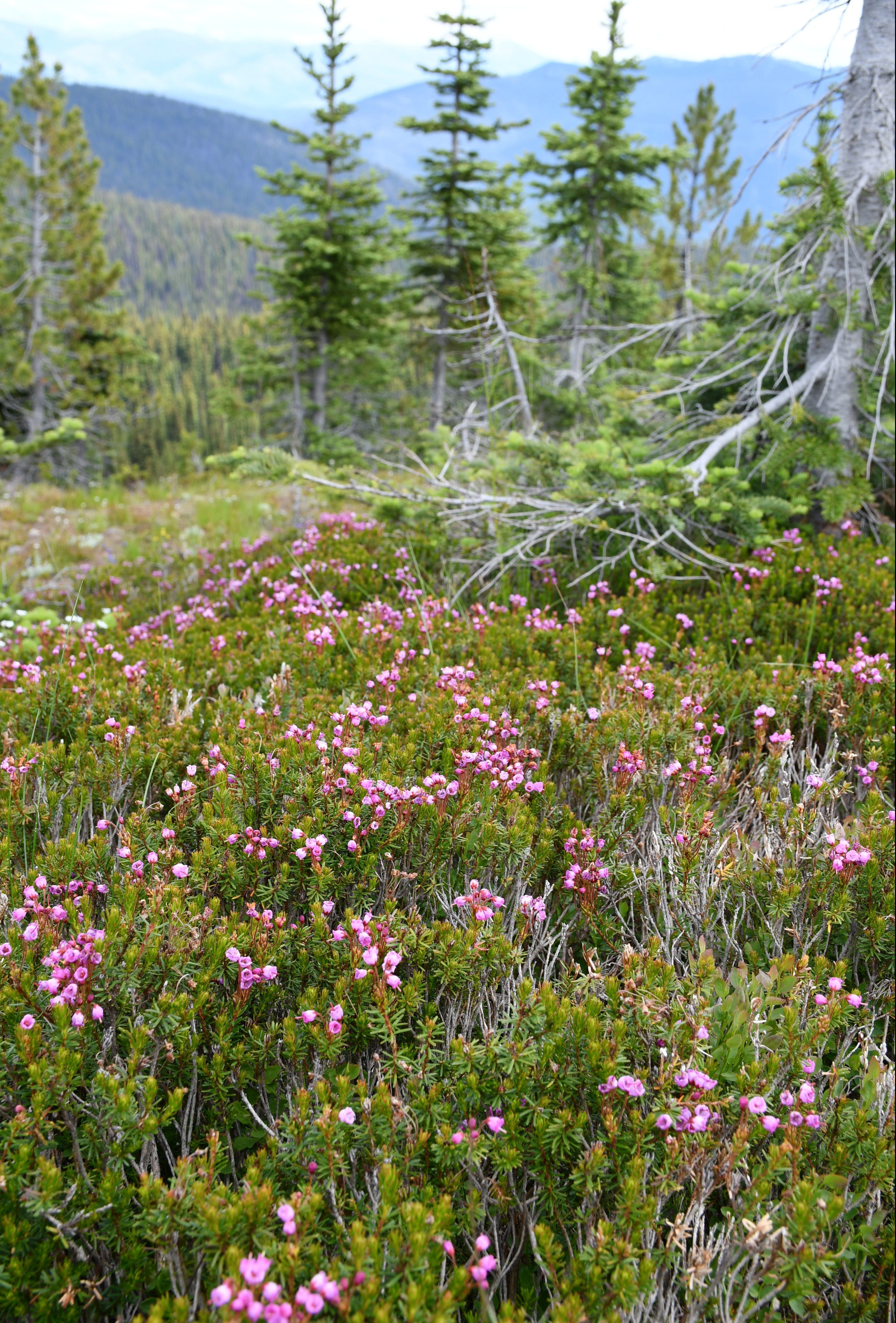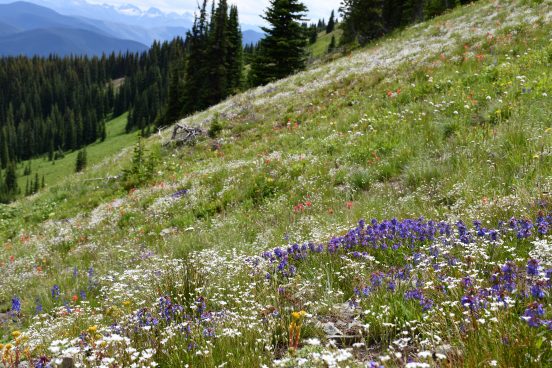Coastal Mountain-Heather Ecosystem, Manning Provincial Park, BC
Manning Park supports alpine ecosystems above about 1850 m. This Park is located in southern BC, in what is essentially the northern-most extent of the Cascade mountain range. Our tour will snapshot alpine meadows found starting at the Sub-Alpine Meadows Loop trail (about 1950 m elevation), then along the Three Brothers Trail ending on a windswept ridge about 2.5 km along the trail at an elevation of about 2070 m.

To get started, view the short video in the first scene (Introduction video) and below, defining the particular alpine zone we have entered. Let’s begin!
From this video, we learned there are three alpine zones in BC:
- the Coastal Mountain-Heather (CMA) zone, found in Manning and other coastal, maritime-influenced BC ranges
- the Interior Mountain-Heather (IMA) zone, located East of the Okanagan
- the Boreal Altai Fescue Mountain-Heather (BAFA) zone, extending north on mountain-lee slopes from Chilcotin and up toward Arctic tundra in northern BC
This zonation is part of BC’s biogeoclimatic ecosystem classification (BEC) zone system, and is based largely on the macroclimate and dominant plant species of a region. The CMA zone is named after species that are common and abundant, pink and white mountain-heathers. Heather and other short stature perennials such as dwarf blueberry are facilitated by suppression of tree cover in these sub-alpine altitudes of the coastal, maritime influenced mountains.


While these two taxa were well represented at Manning, a simple species count across the meadows suggested that this area is particularly rich in herbaceous species (some shown in the preceding video) relative to other coast mountains with less distance to the ocean. Consider why this might be as you explore this and other alpine zone in our other field trips.
For more information about BC’s alpine zones, including a map of their distribution and description of environments and major taxa read this brochure (The Ecology of the Alpine Zones, BC Ministry of Forests and Range Research, 2006).
Take the Tour! [Under Construction for completion Aug 2024]
Instructions: To open in full screen (recommended) use icon in top right corner). Scroll around the 360 images in the 360 tour above to explore each scene. As you explore the scenes, click on the highlighted focal points indicated with “+” icons to access the close-up photos, videos or other internet resources. Make sure your sound is turned on.
[Pilot for the tour, programmed into H5P 360 (by Nina) to guide the finalized 3D Vista version]
Tour in 3D Vista to come in August!
See where you are at in the Google Earth tour that accompanies this 360 trip [Under construction]
Google Earth Overview of Tour Locations
Before running the immersive VR, take this Google Earth Web tour [under construction] of the locations on the tour. Once the trip loads, click “Present” to start the tour. Visit each stop by clicking on the right arrow beside the Table of Contents button. At each stop, explore the main window. View the images, read the text and watch any embedded videos in the information panel on the right. You can double-click the images to enlarge them. You can return to any stops using the Table of Contents.
Note to Instructors: Additional instructional resources accompanying this trip are available. Let us know if you would like to obtain those, or if you have any questions. We welcome your feedback! Email: nina.hewitt@ubc.ca
Project Lead: Nina Hewitt, conception, storyboarding and field media creation (2020-24);
Undergraduate Worklearn Research Assistant (2023-4) Andrew Yan, BSc. candidate, Geographical Sciences, media co-development and lead tour programmer.
Acknowledgements: A special thanks to Stepan Wood for photographic assistance in the field. The work would not have been possible without his assistance. We thanks Ciara Norton for contributing images in the last couple of tour stops; Andrea Sze for narrating the land acknowledgement in the pilot version; Brian Wilson, collaborator on a related project, our Pacific Spirit Forest AR, and for his advice and support on our team; Undergraduate Project Assistant Emily Ballon for her work on a related alpine tour (S. Chilcotin Mountains) that helped to inform this one. And Cassandra Elphinstone for providing plant guidance and team support. We gratefully acknowledge the financial support for this project provided by the UBC Worklearn Program; and UBC Vancouver students via the Teaching and Learning Enhancement Fund.
Manning Park Alpine Ecology VR by Hewitt, N. (2022 H5P 360 Version); and Yan, A. and Hewitt, N. (2023 - 3D Vista Version) is licensed under a Creative Commons Attribution-NonCommercial-ShareAlike 4.0 International License. Based on a work at https://blogs.ubc.ca/alpineplants/manning-park-alpine-meadows/



